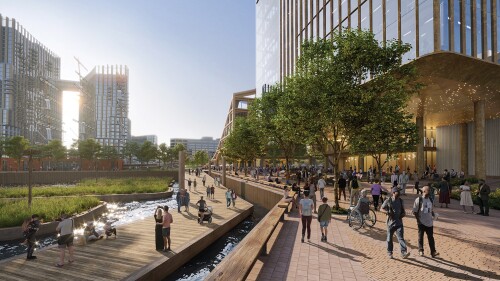Declaring that the major parks in America’s largest cities are enjoying “a golden age,” the Trust for Public Land says that conservancies—the private bodies that work in close partnership with municipal agencies to aid urban parks—deserve part of the credit. In its new report, Public Spaces/Private Money: The Triumphs and Pitfalls of Urban Park Conservancies, authors Peter Harnik and Abby Martin identify what it is about conservancies that helps parks succeed. They illustrate their points through in-depth profiles of conservancies in Atlanta; Denver; Louisville, Kentucky; Memphis, Tennessee; New York; and St. Louis.
Related: Download the Report
Conservancies—sometimes referred to as foundations, alliances, trusts, or “friends of” groups—have usually been established to revitalize run-down parks, the authors explain. Conservancies raise private funds to rebuild, refurbish, and even maintain some of the most iconic urban parks.
The report identifies the hallmarks of effective and sustainable conservancies as the following:
- A formal agreement with the city defining the authority and responsibility of both parties;
- A realistic, broadly supported master plan that sets priorities as to what should be done and when, forestalling future conflict;
- Transparent operations;
- A board of directors that is broad-based and representative of the public;
- Robust fundraising capacity, including money for park maintenance;
- Respect for public sector partners, and vice versa;
- Outstanding public outreach and political advocacy; and
- Entrepreneurial approaches to solving urban park management challenges.
All the while, a conservancy must generate plenty of donations.
The conservancy concept, the authors say, “stokes both hope and fear.” The hope is that a conservancy can make a park more appealing while lightening taxpayers’ burden; the fear is the privatization of a public resource by a narrow group.
The report, however, reflects the fact that whereas once upon a time either the private or public sector did things, today “if you want to get much done, you need a public/private partnership,” says Ed McMahon, a senior resident fellow at ULI.
Still, for all that conservancies have contributed to the popularity of urban parks, the fear of privatization persists.
“The critique I hear from people about conservancies is that they de facto privatize parks and allow wealthy areas to pay for their own lavish parks while the rest of the city is left with underinvested ones,” says Aaron M. Renn, a senior fellow at the Manhattan Institute.
In fact, Renn points out, “many conservancies support unique regional parks, like New York’s Central Park or St. Louis’s Forest Park. These are not just neighborhood parks, but regional centers in their own right, plus major tourist draws. . . . Central Park is not just the Upper East Side’s park, it’s also the world’s park and should be maintained to a special level.”
More important, he adds, conservancies allow cities to get such parks off the books financially, so that cities’ limited funds can be invested in neighborhood parks. “Tax dollars that might otherwise flow to a Central Park,” he says, “are freed up to be spent in [New York’s] outer boroughs, because wealthy donors mostly pay for that park out of their own pockets.”
Taking a wider view, McMahon notes that urban parks have proved good for business, increasing the value of surrounding property, much as transit stations do. He says the most valuable real estate in the state of New York is the land next to Central Park.
McMahon observes that “overcoming opposition to density requires cities to green as they grow” in ways ranging from parks to rail trails to rooftop gardens. By way of example, he points to the two new parks that the city of Washington, D.C., has built in the rapidly developing neighborhood around the Nationals’ baseball stadium.-–—
In the past, he said, municipal officials saw parks (and libraries) as amenities, not necessities, “which is why they were underfunded and neglected for many years.” That attitude has changed, he says, and today “parks are an integral part of urban development” and the resurgence of cities.
He adds that the High Line in New York City “has revitalized an entire swath of lower Manhattan” and that the High Bridge in Poughkeepsie, New York, draws 700,000 pedestrians and bicyclists a year. Such parks, he says, “are not just a recreational amenity, but an economic development opportunity.”






